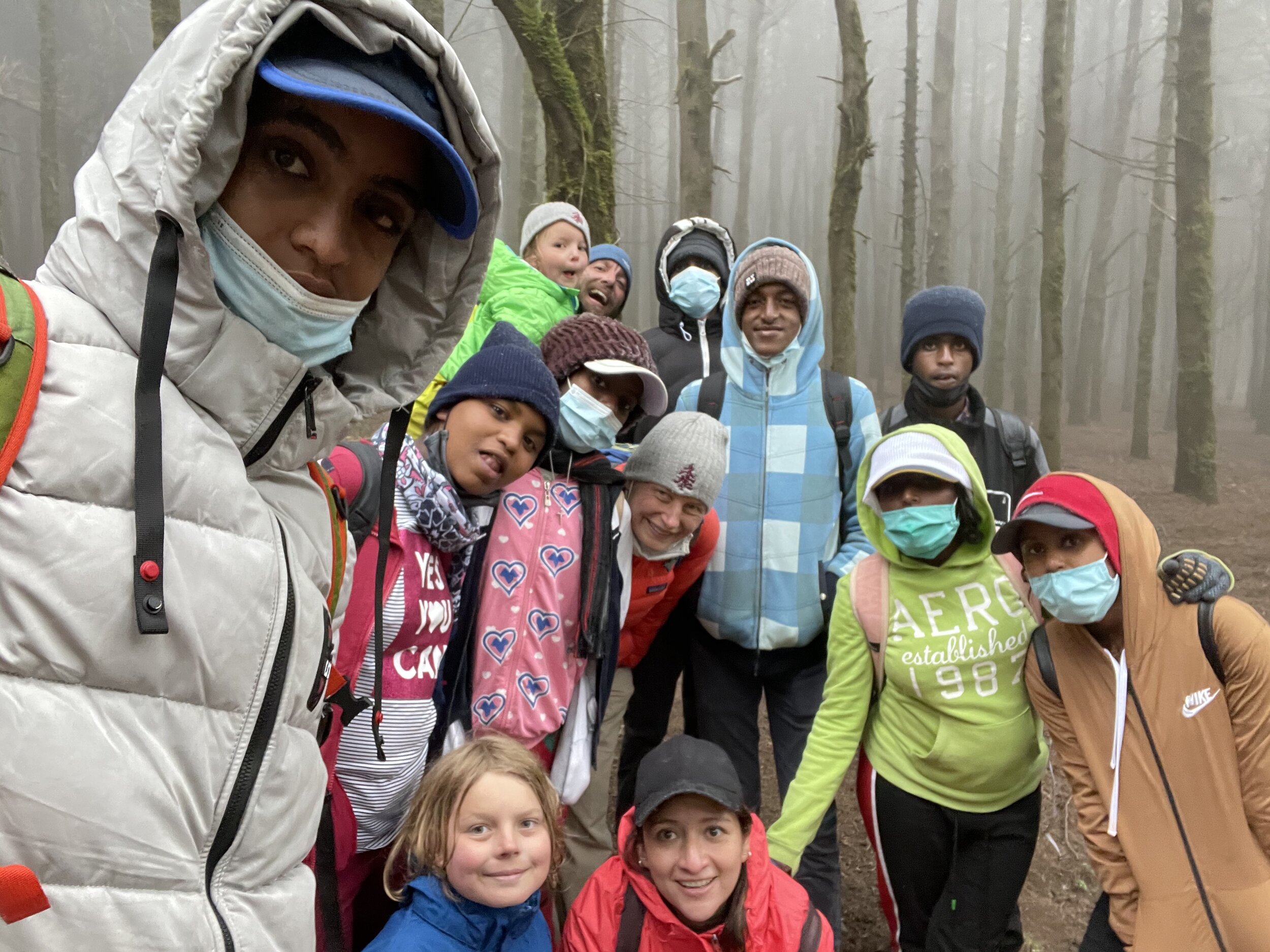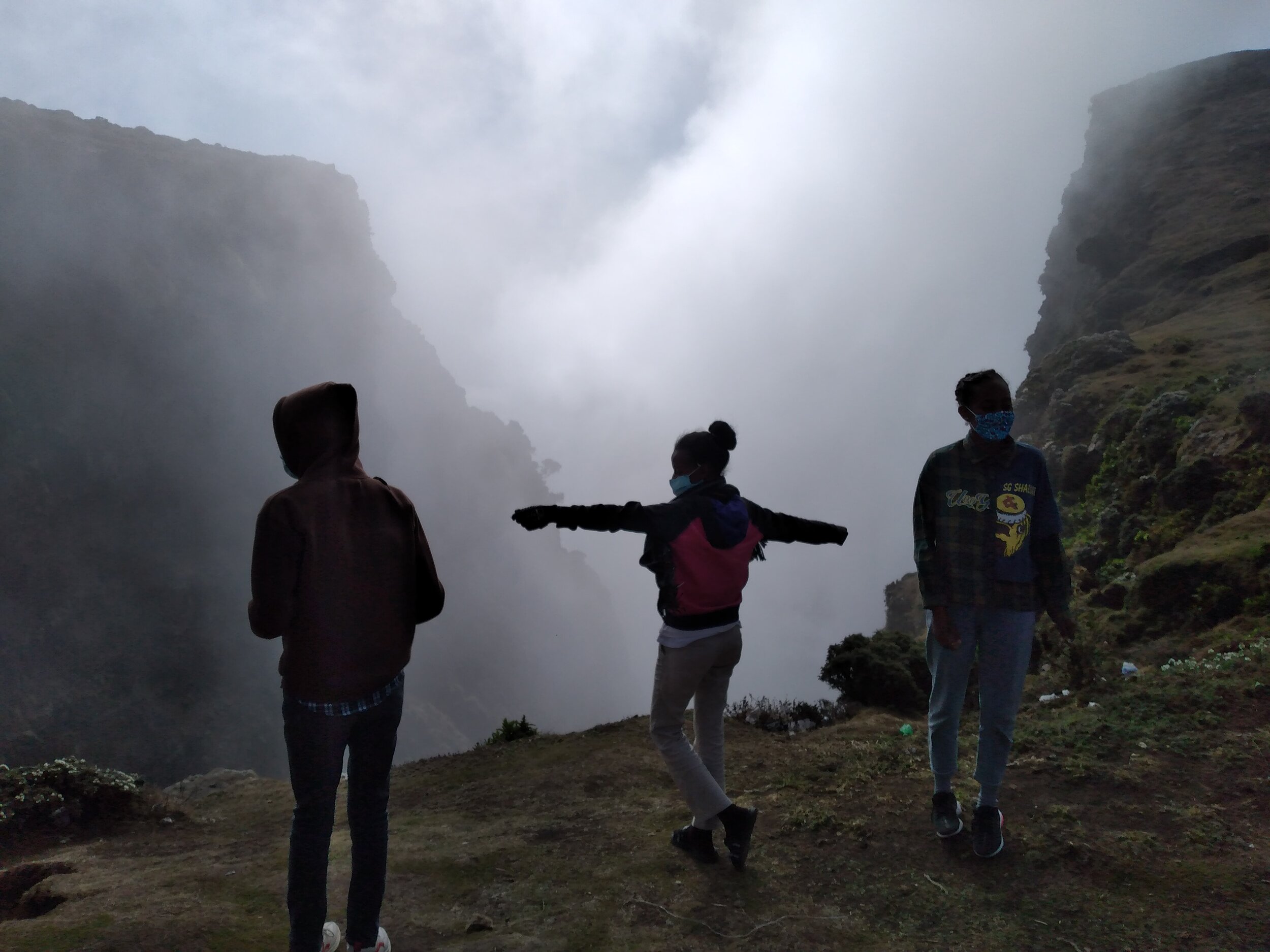Community Building
When my son Lincoln was a toddler, he loved to visit the Wildlife Conservation Society’s Bronx Zoo. The lions and giraffes captivated other young visitors, but Lincoln preferred to spend his time speculating on the personalities of the primates. “That one is telling us not to watch so closely while he’s showering,” he’d say of a lemur who was picking insects off his partner.
At lunch we would head to the center of the zoo to the gelada baboons because the exhibit was next to the only cafeteria that served vegetarian options; we may have missed them otherwise. While we passed apple slices to each other and I swatted mosquitoes off my son’s back, Lincoln would imagine we were just another one of the groups of these social animals sitting among the others. “We should invite that little one over to play this afternoon,” he’d suggest pointing to a smaller gelada, “I think he would like LEGO bricks.”
The picture below was taken last month when Lincoln and all the HMA students did indeed sit among a troop of gelada baboons on the Guassa Plateau. The geladas are endemic to Ethiopia: the only place they live in the wild is in the Ethiopian highlands. There we were, so close we could see the blades of grass they were picking to eat, hear them swallow water from the stream, and watch them suckle milk from their mothers. In the video below, you can hear the baboon chewing, and if you watch to the end, you’ll see just how close we are (and that in the last decade Lincoln did not lose his propensity to speak for them.
The week we spent in Guassa was magical for our students: to be in a forest for the first time in their lives, to stand on a cliff that looked like the edge of the world, to focus a telescope on the craters of the moon, and to see four critically endangered Ethiopian wolves roaming the hills.
The true magic of the trip, however, was in how our students grew as a community. We stayed at the Menz Guassa Community Conservation Center, a very basic lodge established by the community of Guassa to keep the area undeveloped. This setting gave us the opportunity to live without the comfort of having our cooks, cleaners or warm dorms, and therefore to rely on each other. When Elshaday was cold, Sifan brought her hot tea. When Tsion was struggling to finish the hike, Mehretaub held her arm going uphill. When Bruck was ready to continue hiking before everyone else, Yeabsera started a game to pass the time. When it was time to prepare our meals, Ayantu taught all the boys how to cut cabbage. And when Abdul got a piece of dust in his eye, Rediet blew it out so he could keep walking.
One of our goals as a school is to teach our students how to be community builders. In a country politically divided along ethnic lines, we bring students from different regions and aim to develop their skills in collaboration. This trip proved to us that these young people have as much to teach us about how to build community as we do them.





